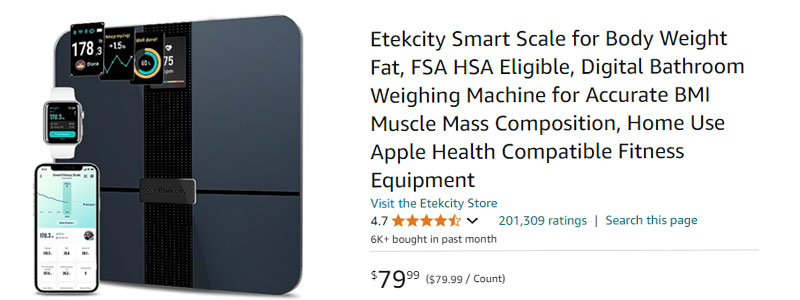Table of Contents
Introduction: My Journey with the Clock
I stared at the clock: 10:13 AM. My stomach growled loudly enough that my coworker shot me a sympathetic glance from across the office. I was three weeks into my intermittent fasting experiment, and while the hunger pangs still visited occasionally, they weren’t the roaring beasts they once were.
That’s the thing about intermittent fasting for beginners – it sounds intimidating (even borderline masochistic), but your body adapts surprisingly fast. The weight loss I’d experienced was just a bonus compared to the mental clarity and energy I’d gained.
Whether you’re looking to shed a few pounds, improve metabolic health, or simply give your digestive system a much-needed break, intermittent fasting might be worth exploring. Let me walk you through everything I wish someone had told me when I started.
What Exactly Is Intermittent Fasting?
Intermittent fasting isn’t a diet – it’s an eating pattern that cycles between periods of eating and fasting. Unlike traditional diets that specify what to eat, intermittent fasting focuses on when to eat.
Think of it as working with your body’s natural rhythms rather than against them. Our ancestors didn’t have 24/7 access to food (or midnight snack deliveries), and our bodies evolved accordingly.
There are several popular methods:
- 16/8 Method: Fast for 16 hours, eat during an 8-hour window (e.g., eat between 12 pm and 8 pm)
- 5:2 Protocol: Eat normally five days a week, restrict calories (500-600) on two non-consecutive days
- Eat-Stop-Eat: 24-hour fasts once or twice weekly
- Alternate-Day Fasting: Fasting every other day
- Warrior Diet: Eating small amounts of raw fruits and vegetables during the day and one large meal at night
For beginners, the 16/8 method is usually the most sustainable place to start – it’s basically just skipping breakfast and not eating after dinner.
The Science Behind Why It Works
“But won’t I go into starvation mode?” I wondered this too when I started. Here’s what actually happens:
When you fast, several things occur in your body:
- Insulin levels drop: This facilitates fat burning
- Human Growth Hormone increases: Beneficial for fat loss and muscle gain
- Cellular repair processes begin: Your cells start cleaning out waste material
- Gene expression changes: Genes involved in longevity and protection against disease get activated
According to a study published in the New England Journal of Medicine, these metabolic switches not only help with weight loss but may also improve blood sugar control, reduce inflammation, and enhance heart health.
Common Intermittent Fasting Methods Compared
Each fasting method has its own pros and cons. Here’s a breakdown to help you choose:
| Method | Description | Best For | Challenges |
|---|---|---|---|
| 16/8 | Fast 16 hrs, eat during 8 hr window | Beginners, busy professionals | Morning hunger initially |
| 5:2 | 5 normal days, 2 low-calorie days | Those who can’t fast daily | Hunger on fasting days |
| Eat-Stop-Eat | 24-hr fast 1-2 times/week | Experienced fasters | Requires significant willpower |
| Alternate Day | Fast every other day | Those seeking rapid results | Difficult sustainability |
| Warrior Diet | One meal a day (OMAD) | People who prefer evening meals | Very restrictive eating window |
Getting Started: A Beginner’s Roadmap
When I first tried intermittent fasting, I made the classic rookie mistake – diving headfirst into a challenging protocol. Learn from my hangry meltdowns and ease into it instead:
- Start with a 12-hour fast: If you finish dinner at 8 PM, don’t eat until 8 AM the next day. Many people do this naturally!
- Gradually extend your fasting window: Add an hour every few days until you reach your target (14, 16, or 18 hours)
- Stay hydrated: Water, black coffee, and unsweetened tea are your best friends during fasting periods
- Plan your meals: When your eating window opens, be prepared with nutritious options rather than grabbing whatever’s fastest
- Listen to your body: If you feel truly unwell (not just hungry), it’s okay to adjust your approach
What Can I Consume While Fasting?
“So… just water for 16 hours?” Not quite! Here’s what’s generally acceptable during fasting periods:
- Zero-calorie beverages: Water, black coffee, unsweetened tea
- Salt and electrolytes: A pinch of salt in water can help maintain electrolyte balance
- Some experts allow: Up to 50 calories that won’t significantly impact insulin (like a splash of milk in coffee)
What to avoid:
- Sugar in any form
- Artificial sweeteners (they can trigger insulin response)
- Meal replacement shakes, juice, or smoothies
- Gum (even sugar-free varieties can stimulate digestive enzymes)
Common Challenges and How to Overcome Them
Let’s talk about the elephants in the room:
The Hunger Games
Hunger comes in waves – it doesn’t continuously get worse. If you can ride out a hunger wave (typically 20 minutes), it often passes. Strategies that helped me:
- Staying busy during hunger peaks
- Drinking sparkling water
- Going for a walk
- Reminding myself it’s temporary
Social Situations
“Why aren’t you eating breakfast?” “Just one bite won’t hurt!” Sound familiar? Navigate social pressure by:
- Scheduling social meals during your eating window when possible
- Having a simple explanation ready (“I’m trying intermittent fasting”)
- Bringing a beverage you can consume (like sparkling water or black coffee)
Energy Fluctuations
Your energy might dip initially as your body adapts. Power through with:
- Proper hydration and electrolytes
- Adequate sleep
- Scheduling important tasks during your natural energy peaks
- Patience – adaptation takes time!
Who Should Avoid Intermittent Fasting?
While intermittent fasting works wonders for many, it’s not for everyone. Skip or consult a healthcare provider first if you:
- Are pregnant or breastfeeding
- Have a history of eating disorders
- Are underweight or malnourished
- Have certain medical conditions (diabetes, low blood pressure, etc.)
- Take medications that require food
- Are under 18 years old
As research from Harvard Medical School points out, individual factors significantly influence how well intermittent fasting works for different people.
Beyond Weight Loss: Unexpected Benefits
While I started fasting primarily for weight management, I noticed several surprising benefits:
- Mental clarity: The “brain fog” I used to experience mid-morning disappeared
- Simplified life: Fewer meals meant less planning, cooking, and cleaning
- Better relationship with hunger: I learned to distinguish between actual hunger and emotional/habitual eating
- Increased appreciation for food: Meals became more satisfying and mindful
- Improved digestion: My persistent bloating subsided significantly
According to a study in Cell Metabolism, intermittent fasting may also offer protection against aging, cancer, and neurodegenerative disorders – though more research is needed.
Combining Intermittent Fasting with Other Dietary Approaches
Intermittent fasting is remarkably flexible – it works alongside most healthy eating patterns:
- Pairing with keto: Many find these approaches complementary for accelerated fat adaptation
- Plant-based fasting: Focusing on nutrient-dense plant foods during eating windows
- Mediterranean approach: Emphasizing healthy fats, lean proteins, and whole foods
- Flexible approach: No specific restrictions during eating windows (though quality still matters!)
The key is finding a sustainable combination that works for your lifestyle and preferences.
FAQs About Intermittent Fasting for Beginners
Will intermittent fasting slow my metabolism?
Despite popular belief, short-term fasting (less than 24 hours) doesn’t slow metabolism. Some studies actually show a slight increase in metabolic rate during fasting periods due to the release of norepinephrine.
Can I exercise while fasting?
Yes! Many people report better workout performance in a fasted state, particularly for low to moderate intensity exercises. For high-intensity workouts, you might prefer exercising during your eating window.
Will I lose muscle with intermittent fasting?
Not if you maintain adequate protein intake during eating windows and incorporate strength training. In fact, the temporary increase in human growth hormone during fasting may help preserve muscle mass.
How long until I see results?
Most people notice initial changes (often water weight) within the first week. More sustainable fat loss typically becomes apparent after 2-3 weeks of consistent fasting.
Can I drink alcohol while intermittent fasting?
Technically, alcohol breaks a fast. Additionally, alcohol on an empty stomach can hit harder and faster. If you choose to drink, do so moderately during your eating window.
A Final Word: Patience and Personalization
I’ve been practicing intermittent fasting for over a year now, and the biggest lesson I’ve learned is the importance of personalization. What works beautifully for one person might be miserable for another.
Start with a manageable approach, adjust as needed, and remember that consistency trumps perfection. Some days will be easier than others – that’s completely normal.
Intermittent fasting isn’t a miracle cure, but rather a tool that can help create a healthier relationship with food and hunger. When combined with nutritious food choices and regular physical activity, it can be a sustainable approach to weight management and overall wellness.
Have you tried intermittent fasting? I’d love to hear about your experience in the comments below!
This article is for informational purposes only and does not constitute medical advice. Always consult with a healthcare professional before making significant changes to your diet or exercise routine.













